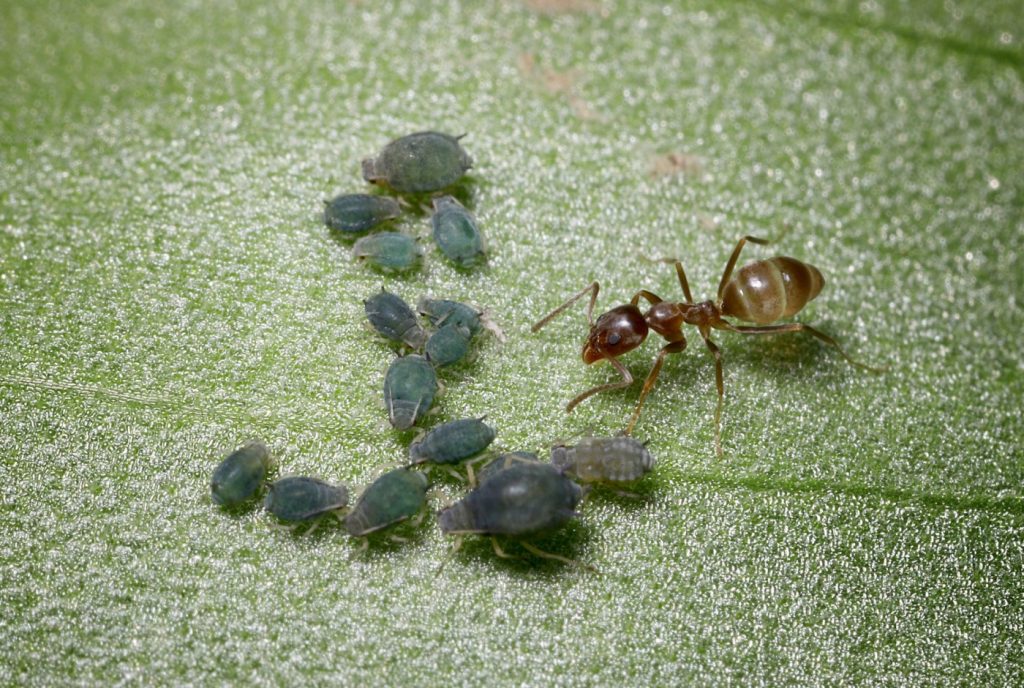Q. Ever since the rain came, we’ve been invaded by ants. They are really tiny and get into everything!
I first encountered Argentine ants after moving to California and knew they were not like any ants I had seen before. They were so tiny and were able to get into everything, even zip-lock bags. They also seemed to be smarter than the average ant. When I tried to smush them, they would run away from my thumb. These were nothing like the fat, languid ants I grew up with.
Argentine ants are (obviously) not native to California. Most ant species will fight each other when one colony encounters another, keeping the overall ant population under control. Argentine ants see other colonies of Argentine ants as their allies and will form super-colonies. It’s been said that California is one gigantic Argentine ant colony.
Argentine ants usually live outdoors in shallow nests located near food sources like compost piles, trash containers, or aphid-infested plants. During a heat wave or heavy rain, ants will come inside to either seek or escape water. Once inside, they scout for either sugar or occasionally protein. Pretty soon you’ve got ants everywhere.
Although it is tempting to just spray every trail you see, this is the least effective way to deal with an ant invasion. First, find any entry points such as windows, doors, or pipes. If feasible, seal any cracks with caulking. Thoroughly clean the kitchen or any spaces where ants have been seen. Once everything has been cleaned, wait for the ants to reappear and form a trail. Place gel bait where the ants will find it and wait. Try not to look at it, since it will be covered with an alarming number of ants. Soon all those ants will bring the bait back to the nest and poison the colony. Some baits contain over 5% boric acid, but this concentration is too high and will kill the ants before they have a chance to return to the nest. Ideally, the bait should contain only 0.5-1% boric acid.
Sometimes ants will infest a potted plant. In this case, make a solution of 2 tablespoons of insecticidal soap per gallon of water and submerge the pot for 20 minutes. Just submerge to cover the potting soil and use only soap that is formulated for use on plants. After 20 minutes, allow the pot to drain and watch for any stragglers.
Ants can be particularly harmful if they establish in an aphid-infested plant. Aphids alone are subject to predation and parasites, which keep their populations under control. Ants will protect aphids in order to feast on the sticky honeydew that they produce. Instead of spraying willy-nilly, use Tanglefoot to exclude ants from affected trees or shrubs. Tanglefoot, a sticky, gooey substance, can be applied near the base of a tree to stop ants from reaching the aphids. Take care to wrap the trunk before applying, and use gloves since Tanglefoot is difficult to wash off.


